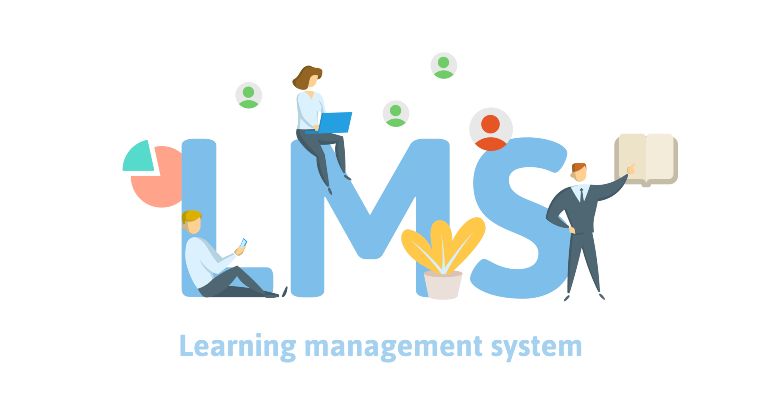
Learning management systems have been a key feature of eLearning implementations in many organizations for years, and they continue to be important even as new technologies and approaches to online learning evolve. It is essential to understand what an LMS is, what it does for an organization, and what the critical functions are that it should (ideally) provide.
What is an LMS?
A learning management system (LMS) is software that helps L&D manage the administration, delivery, tracking, and reporting of learning programs—whether they consist of synchronous instructor-led classes (face to face in a physical classroom, or « virtual » with everyone online at the same time), or asynchronous learning programs. The LMS automates administrative functions, eliminating the associated manual work needed to organize the content, the data, and the participation of learners. In addition to eliminating manual work, an LMS saves time as it helps L&D measure results, document compliance with regulatory requirements, and forecast demand.
Before the day of online instruction, the LMS began as a manual method of recording course participation and class enrollments. However, LMS implementations rapidly leveraged the features of digital databases and spreadsheets. All or nearly all of the features found in today’s LMS software originated as features in desktop or laptop Windows software by the early 1990s; today there are improvements that make recordkeeping more efficient.
Objects, SCORM, learning management systems, and vendor portals
As learning-related content moved online, interest in the instructional design community began to grow around the idea that content for learning should be re-usable and shareable, as a means of making instructional development faster and more efficient. This concept became the core of the « learning object ». Wikipedia says that « A learning object is ‘a collection of content items, practice items, and assessment items that are combined based on a single learning objective’. The term is credited to Wayne Hodgins, and dates from a working group in 1994 bearing the name. » This idea took hold within the US Department of Defense where there was a great deal of instructional material on many topics, much of which was identical in many ways but managed by individual organizations, each of which had proprietary or unique technical approaches to delivery. The result was much inconsistency and duplication.
To track a learner’s progress, the content often had to be uniquely programmed to work in each specific delivery environment. This meant solutions were expensive and tended to have a short shelf-life. To reduce or eliminate duplication and inconsistency, to facilitate content interoperability in content delivery, beginning in 2004 the DoD launched the SCORM® (Sharable Content Object Reference Model). This reference model was designed to leverage standard web technologies and existing learning technology specifications. SCORM® consists of three technical specifications that address interoperability, portability, reusability, and the instructional sequencing of self-paced eLearning content.
LMSs for US DoD installations must be SCORM-conformant (to the “current version”). Because this affects so many learning products and learning management systems, SCORM-conformance has become a de facto standard for LMS products, although it is not universal. For OTS materials distributed as suites, L&D will also need to evaluate the learning management systems that are not SCORM-compliant. Those systems are often referred to as « vendor portals » and they provide pretty much the same functionality as the SCORM-compliant products. If your organization does not have to meet the DoD requirements (no DoD clients), you can select a learning management system that meets your needs, usually related to reports you must provide to your clients.
Selection of a learning management system
The Learning Guild has published a number of articles in Learning Solutions and several publications that offer tips to LMS selection. These articles guide you through the selection criteria that expert writers have identified as key to making a good choice, or at least coming up with a short list from among the hundreds of choices available.


